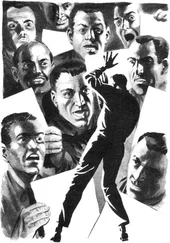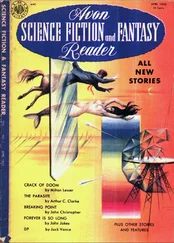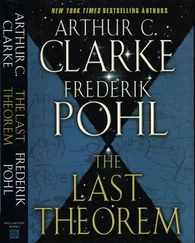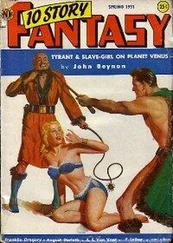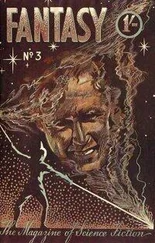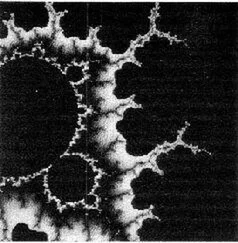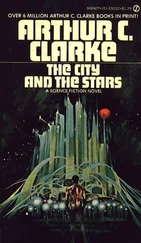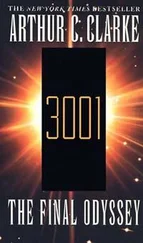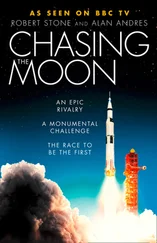"Sure you're okay?" he asked.
Bowman nodded.
"Sure," he said. "Go down and look yourself."
As the flawlessly smooth walls drifted by him, unbroken by any markings, unscarred by age, Kimball could not help recalling Alice 's fall down the rabbit hole. It was an uncomfortable memory, for that strange descent had led to an underworld where magic reigned, and the normal laws of nature were overthrown. For the first time, he began to wonder if this might be happening here.
From the very beginning, they had known that they were dealing with a science greater than man's. But they had not doubted-they dared not doubt-that it was a science that they could ultimately understand. As the light below grew in size and brilliance, Kimball felt the first, appalling intimations that this might not be true.
It was a thought to hold at arm's length, especially in surroundings such as these. He was coming to the end of the line, and was already far below the last reflected rays of the sun. It required an act of physical courage to put the binoculars to his eyes, and to stare steadfastly at the tunnel's glowing end.
Bowman was right. He could have been looking at the Milky Way. The field of the instrument was full of stars– thousands of them, shining in the black core of this tiny, frozen world.
Some facts are so incredible that they are believed at once, for no one could possibly have imagined them. Kimball never doubted the message of his eyes, and did not try to understand it. For the moment, he would merely record what he saw.
Almost at once, he noticed that the stars were moving. They were drifting out of the field on the left, while new ones appeared from the right. It was as if he was looking down a shaft drilled clear through Jupiter V, and observing the effects of its rotation as it turned on its axis every ten hours.
But this, of course, was impossible. They had mapped and surveyed the entire area of the satellite, deliberately searching for any other entrance, and had found nothing but unbroken rock and ammonia ice. Kimball was quite certain that there was no window at the antipodes through which stars could shine.
And then, rather belatedly-he was, after all, a communications engineer and not an astronomer-he noticed something that totally demolished this theory. Those stars were drifting to his left; if the movement had been due to Jupiter V's spin, it should have been in a direction almost at right angles. So the rotation of the little moon had nothing whatsoever to do with it….
That was quite enough for one man, on one visit.
"I'm coming up," he called Bowman. "We'd better talk this over with Vic-maybe he has an explanation."
When he had rejoined Bowman on the surface of the satellite, it seemed to him that the once incredible sight of Jupiter spanning the sky was as familiar and reassuring as a quiet country landscape back on Earth. Jupiter they understood-or where it still held mysteries, they were not such that sapped the mind. But the thing beneath their feet defied all reason and all logic.
They waited, lost in their own thoughts and saying nothing, merely listening for the first sound of Discovery's beacon as she came up over the horizon. Luckily for their peace of mind, she was exactly on time; still without a word, they jetted themselves up toward her and, ten minutes later, were jockeying themselves through the airlock.
Astronauts are somewhat addicted to harmless practical jokes; it is one of their ways of asserting superiority over the Universe, which has no sense of humor. Kaminski and Hunter might, for a moment, have thought that the others were pulling their legs, but their doubts lasted no more than seconds.
Two orbits later, they went down themselves, taking cameras with long-focus lenses to record the star-patterns at the bottom of the shaft. Within minutes, Kaminski had an additional piece of information. He timed the movement of the stars across the opening, and calculated that it took fifteen hours for a complete revolution-as against Jupiter V's ten. It seemed that, by some magic of space or time, they were looking out into a strange universe through a window in the surface of a world that turned upon its axis once in every fifteen hours.
Kaminski was almost half a mile down the shaft when with shocking abruptness, the window looked upon a different scene.
SOMETHING IS SERIOUSLY WRONG WITH SPACE
Hunter, up on the surface, heard and recorded every word.
"I'll try a long exposure with the thousand-millimeter lens," Kaminski began. "I hate to confess it, but this is the first time I've ever done any astronomical photography. … Hello!"
"What's happening?"
"The end of the slot's getting lighter. Yes, there's no doubt of it. There's a very faint glow along one side. You know, it looks like-my God-that's what it is!!"
"What, for heaven's sake?!"
" Sunrise ! Sunrise ! Leave me alone-I want to watch."
There were maddening minutes of silence, during which Hunter could hear only Kaminski's heavy breathing and, occasionally, the sound of instruments and controls being operated. Then, at long last, the astronomer spoke again, his voice full of wonder.
"It's a sun, all right. And it's enormous-it's completely filling the view. If I could see it all at once, it would look as big as Jupiter.
"And it's not a G-zero type like our sun. It's very dull and red-I don't even need dark filters on the telescope. Must be a red giant, like Antares. That's an idea-maybe it is Antares. Ah, here comes a sunspot-looks pretty small, but it could be as big as our whole sun…."
His voice trailed off into silence and again Hunter possessed himself in patience until at last Kaminski said: "Still no change-that sun's still blocking the view. It'll take hours to move out of the way. Let's get back to the ship-I want to study these photos. And I'd like to try an experiment, if I can talk Dave into it."
"What sort of experiment?"
"We still have most of our instrumented probes. This is the place to use them."
When they returned to the ship, Bowman was at first reluctant. If anything was dropped down the shaft, he pointed out, even this low gravity could give it a terminal speed of over a hundred miles an hour. There was no telling what damage it might do-or what reactions it might produce.
Kaminski finally settled the argument by pointing out that the designers of this place would certainly have protected their handiwork against such trivial accidents. Every few centuries, a large meteor must plunge into the chasm at a far higher speed than any falling probe could attain.
Once the project had been agreed upon, Kimball acted as bombardier. Since the orbiting Discovery could track the probe only during the few seconds while it was passing directly over the slot, space capsule Alice was fitted with receiving gear. Kimball dropped the probe at the exact center of the chasm, then flew to the edge and waited on the brink, Alice 's receiving antenna jutting out over the abyss.
At first the probe fell with the lethargic slowness to be expected in Jupiter V's gravity field. Its instruments recorded a very slight temperature rise, but nothing else of importance. There was no radioactivity, no magnetic field.
And then, five miles down, it began to accelerate. Its signals started to drop rapidly in pitch, indicating a Doppler effect of astonishing magnitude. Kimball had to continually retune the receiver in order to keep track of the signals, and the radar started to indicate impossible ranges and velocities. In a few seconds, the probe was two hundred miles away-which, taken at face value, meant that it had gone right through Jupiter V and out the other side. Thereafter, it became more and more difficult to detect, and swiftly passed beyond the tuning range of the receiver. On the last contact, it had descended nine thousand and fifty miles down a hole which under no circumstances could be more than a hundred miles deep-the diameter of the tiny moon.
Читать дальше

